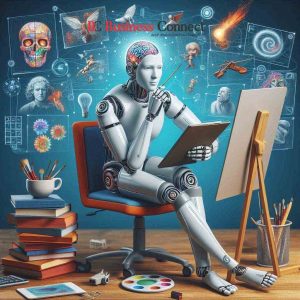The Great AGI Question: When, How and What Does It All Mean?
–by Jaya Pathak
AGI stands for Artificial General Intelligence. Wikipedia defines AGI as a type of artificial intelligence (AI) that matches or surpasses human capabilities across a wide range of cognitive tasks. It performs specific tasks and achieves distinction within its domain. It possesses the ability to learn, understand and apply its previous knowledge like a human being is capable of.
It has a versatile range as it can perform various tasks. It can perform any cognitive task that a human brain is capable of. Either it is playing chess or understanding human emotions, its wide range encompassesvarious tasks. It is able to learn from past experiences and use that knowledge to deal with a new situation. It can interact, interpret and comprehend the world in a more flexible manner.
An AI needs visual perception, audio perception, fine motor skill, NLP (Natural Language Processing),problem solving, navigation, creativity and social & emotional engagement in order to become AGI.

Examples of AGI
- Personal Assistant Systems like Siri, Alexa, Google Assistant
- Self-Driving Cars use AGI in order to know the locality and surrounding area so that it can make its own decision in order to navigate.
- Virtual Assistant in Healthcare Industryuses AGI so that it can analyse the patient’s data and even understand him emotionally.
- AlphaGo and OpenAI’s Dota 2 bots use AGI ability to play strategic games.
- It can be used in the field of Art and Music to create something aesthetic which is as appealing as a human art form.
Types of AI based on capabilities
- Artificial Narrow AI: Artificial Narrow Intelligence can perform a single task faster and even better than a human mind. It is also known as Weak AI. It is the only AI which is widely used today, others are merely theoretical. It can be trained in such a manner so that it can perform task better than a human mind can. It should also be noted that it can not perform those tasks which are beyond its ‘defined’ range.
Siri, Amazon’s Alexa and IBM Watson are the examples of Artificial Narrow AI. Even ChatGPT can be considered as a narrow AI as it’s cognitive intelligence is limited to text-based chats only.

- Artificial General Intelligence: Artificial General Intelligence is also known as Strong AI. Unlike Narrow AI, it is merely a theoretical concept. It can perform any cognitive task that a human being is capable of. It can use its past learnings as well as skills so that it can complete a certain task in a different way without any further training by human beings. Thus, the general intelligence can perform any task on the basis of previous knowledge.
- Super AI: Super AI is also known as Artificial Superintelligence. It is also a theoretical concept. It will think, learn, reason, make judgements and even possess cognitive abilities that will even surpass human beings. Those application possessing Super AI capabilities will go beyond the human sentiments and emotions, needs and desires of their own.
Types of AI based on functionalities
- Reactive Machine AI: It is designed to perform a very specific task. It has no memory at all. As it is clear that they do not have any previous knowledge, thus they can only work through the data available presently. It can analyse quite wide data to produce certain output. It arises from statistical maths.
Examples-
- Netflix’s recommendations are powered by the models that collects data based on the viewing history so that customers will enjoy the content more.
- IBM Deep Blue has beaten a chess grandmaster in the 90s by predicting the possible outcomes of every single move.
- Limited Memory AI: The limited memory AI can remember the past memories, events and outcomes unlike Reactive Machine AI and hence observes the specific situations over the period of time. In order to achieve a desired outcome, Limited Memory AI uses present and past data to decide a particular action. It should also be noted that it can not use or retain the data for a longer period of time. It can only use the past data for a specific time period. It can further improve its performance as it is trained on various data at one point of time.
Examples-
- Virtual assistants and chatbots like Siri, Alexa, Google Assistance, Cortana and IBM Watson Assistant combine NLP and Limited Memory AI in order to understand the questions or request asked by the users and to take appropriate actions.
- Self-driving cars use Limited Memory AI to know and understand location around them and thus make decisions accordingly like when to speed up or when to apply the break.
- Theory of Mind AI: It is a functional AI that will understand the thoughts and emotions of others. It will allow the AI to make human-like relationships. It will also be able to understand the artworks as well as essays unlike todays generative AI tools. It can also personalise its interactions with human beings on the basis of their emotional needs.
- Self-Aware AI: It is also a functional AI that will possess super AI capabilities. It has also theoretical functions. It will have the ability to understand human emotions and thoughts along with its own internal conditions. It will have its own emotions, needs and belief systems.
Conclusion
In a nut shell, Artificial General Intelligence (AGI) can bring a change in the field of Artificial Intelligence as it uses the skills of a human brain. Though we have achieved systems like personal assistants, self-driving cars and virtual assistants in the health care industry, AGI is still a dream.There are obstacle like it is quite hard for a machine to apply common sense like a human brain is capable of. Also, learning a specific thing from a particular domain and then applying it to other is a big obstacle in itself.



